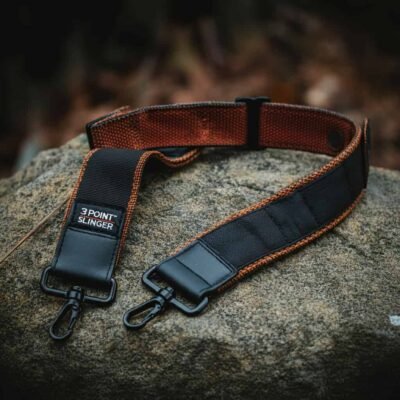When it comes to carrying your camera, choosing between a 3 point slinger vs standard camera straps might be difficult. Though they each have their own special features, both solutions help you carry your camera, which is their main function. In this post, we’ll go over the distinctions between these two solutions, discuss their merits and cons, and help you determine which one is best for your photography needs.

Understanding the Basics
What is a 3 Point Slinger?
A 3-point slinger attaches to three locations on your body: the shoulder, the chest, and the area close to the waist. Consequently, this design allows the camera to hang comfortably by your side, making it simple to grasp and shoot swiftly. Moreover, the camera remains safe and out of the way, which in turn relieves stress on your neck and shoulders.
What is a Traditional Camera Strap?
A classic camera strap is often attached to the camera’s top or sides, allowing it to be worn around the neck or over the shoulder. These straps are frequently included with cameras when purchased and are the most common way photographers transport their equipment. They can be worn on one shoulder, over the torso, or around the neck, among other forms.
Pros and Cons: 3 Point Slinger
Pros
- Comfort: Your neck and shoulders will experience less strain as a result of the 3-point slinger’s distribution of the weight of your camera across your body. This makes it an excellent choice for extended photographing sessions.
- Quick Access: With the camera at your side, you can easily grasp and shoot. You won’t have to mess with the strap and can swiftly place your camera.
- Security: The camera’s 3-point design keeps it firmly against your body, lowering the risk of it swinging around and colliding with objects or people.
- Versatility: Many 3-point slingers come with additional features like extra pockets for memory cards, batteries, and other accessories, making them more versatile than traditional straps.
Cons
- Complexity: The 3-point slinger might be more difficult to set up and adjust, particularly for beginners accustomed to simpler straps.
- Cost: These slings can be more expensive than traditional straps, especially if they come with additional features like padding and extra pockets.
- Bulkiness: Some 3-point slingers can be bulky, making them less suitable for photographers who prefer a minimalist setup.
Pros and Cons: Traditional Camera Straps
Pros
- Simplicity: Traditional camera straps are straightforward and easy to use. There’s no need to adjust multiple points of contact, making them ideal for beginners.
- Affordability: These straps are generally less expensive than 3-point slingers, making them accessible to a wider range of photographers.
- Lightweight: Traditional straps are usually lighter and less bulky, making them easier to pack and carry.
- Availability: Since most cameras come with a traditional strap, there’s no need for an additional purchase, making them a convenient option.
Cons
- Discomfort: Carrying a camera around your neck or on one shoulder can cause discomfort and strain, especially with heavier cameras and lenses.
- Limited Security: The camera can swing around when walking or moving quickly, increasing the risk of damage or injury.
- Less Versatile: Traditional straps lack the additional features and storage options that many 3-point slingers offer.
Which One is Better for You?
The demands and tastes of the photographer will choose whether to use a 3-point slinger or a conventional camera strap. Let us break out some scenarios:
For Long Sessions and Heavy Gear
The 3-point slinger might be a better option if you have a long day of photography planned or are toting a bulky camera gear. Its design lowers strain and effectively distributes weight, making it simpler to carry your goods for long periods of time.
For Quick and Easy Photography
A standard camera strap can be more useful if you’re shooting on the fly or want a lightweight, simple setup. It’s lightweight and easy to wear, making it great for rapid, on-the-go shooting.
For Security and Versatility
The 3-point slinger gives greater security and versatility if you’re shooting in busy settings or want extra storage choices. The additional pockets and safe design make it an excellent alternative for photographers who need to keep their equipment handy and accessible.
For Beginners or Budget-Conscious Photographers
Using a standard camera strap can be the best option if you’re just starting out in photography or have a limited budget. It’s simple, effective, and usually included with the camera, so there’s no need for an additional purchase.
Final Thoughts
Both three-point slingers and standard camera straps have their uses in the field of photography. Depending on your priorities—comfort, ease of use, security, or simplicity—you can make a different decision. The 3-point slinger is particularly useful for photographers who shoot for long periods of time or require quick access to their camera. A conventional camera strap is still a good option, nevertheless, for people who want a straightforward, affordable, and lightweight solution.
In the end, it may come down to trying both and deciding which one works best for your shooting style. Whatever option you select, bear in mind that the ideal camera strap is the one that allows you to stay comfortable and concentrate on taking excellent pictures.


Pingback: Best Cameras for Photography in 2024: Expert Picks and Tips.
Pingback: Travel Case for Your Camera: How to Choose the Best Option.